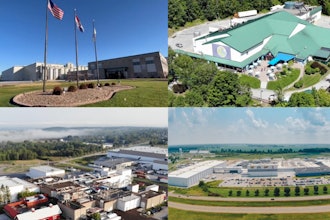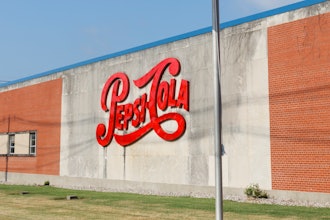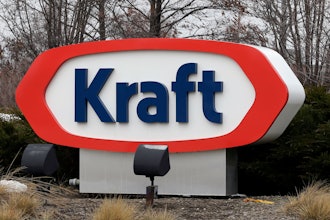
In the face of continued global supply chain instability, the last thing your plant needs is downtime. According to a widely cited industry figure from Deloitte, in their report on smart factories, even during the best of times – before COVID caused disruption – unplanned downtime costs industrial manufacturers an estimated $50 billion annually.
Safeguarding operational efficiency from unintended downtime can be achieved by employing predictive maintenance techniques and technologies. Woven into critical processes across the plant floor, a predictive maintenance effort provides organizations with meaningful intelligence about the condition of equipment in real-time, allowing them to get ahead of potential problems before they become widespread issues. This approach dovetails with a broader preventative maintenance strategy which includes pre-planned, scheduled reviews (collected manually) of equipment conditions and overall operations. Together they can help ensure plant operations are running efficiently and avoid any unexpected lulls.
For example, predictive maintenance and analytics technology can monitor and collect data from critical components and machines through wireless sensors. Key performance indicators such as vibration, temperature, and pressure can all be observed, measured, and quickly analyzed to help companies make informed maintenance decisions. The availability of real-time data delivered via technology advancements, like sensors and the Internet of Things (IoT), serves as a powerful tool to prevent downtime from impacting the bottom line.
And it’s not just overall equipment effectiveness (OEE) where predictive maintenance can play a role. Such an approach can build much needed resiliency into your organization, regardless of the level of supply chain volatility. By increasing workplace safety, maximizing productivity and capacity, and even reducing costs, it can provide a clear path for how plant operations may evolve and grow, especially as competitors strive to do the same. To get started and capitalize on the benefits of a preventative maintenance approach, here are three best practices to consider:
1. Take Control of Planned Maintenance
Understanding OEE is a critical component for any predictive maintenance effort. Without it, you can’t measure how your operations are running and if, or how, it can be improved. To get ahead of any equipment maintenance needs, implement a planned maintenance schedule that considers not just critical components on the plant floor, such as machinery and capacity outputs, but also your facility’s electrical equipment, including breakers and switchgear.
Downtime under your control is much more palatable when you can determine how, when, and why it occurs. As part of your process, designate a time to take production offline and budget it into your fiscal year. By carving out a time to take production offline for non-emergent, routine maintenance, you can better prepare for the slowdown and avoid other unplanned downtime and expenses.
Within that schedule build out routine maintenance checks. Consider it akin to a routine wellness check that you would conduct with a doctor. The goal is to avoid those little problems from becoming big issues. For example, are certain machines running too hot? Machinery that runs at the suggested temperature will last longer and provide better output than those that don’t.
Understanding the performance and reliability of your equipment will help you determine what needs to be addressed now versus what machinery upgrades can wait.
2. Make Safety and Training Your Top Priority
Safety concerns and maintenance issues often stem from the very same problem: a lack of planning and analysis.
Preventative maintenance can help address unnecessary safety hazards in the plant. For instance, consider the last time an arc flash assessment was conducted. Are your employees prepared with the right personal protective equipment or PPE to stay safe? Have they been recently trained on arc flash safety? OSHA considers any workers who will work on or near exposed energized parts to be “qualified workers,” and those individuals need specialized training to help prevent electric shock.
Beyond routine electrical safety, a comprehensive training program is an essential element of any workplace safety effort and can go a long way in preventing potential risks. Take the time to identify hazards, outline avoidance techniques, and highlight prevention opportunities to keep employees safe and ensure operations are maintained.
3. Harness the Power of Technology
This is where predictive maintenance really takes center stage as the shift towards all things digital and the adoption of IoT play an important role in your preventative maintenance efforts. The ability to leverage sensors and collect more data on machine performance in real-time delivers critical insight.
For example, products with sensors or those that can be added to various machines, are able to measure and capture data regarding the performance of a piece of equipment. Drilling down further into the data on a particular machine or cluster is a valuable exercise. As patterns emerge, savvy organizations identify when the machines are most efficient, or where they are most susceptible to breakage. Such insight can be added to your preventative maintenance plan and addressed before unplanned downtime occurs.
Worth noting, implementing any smart item or IoT element does not have to be a massive undertaking. Consider a phased approach, reviewing location-by-location or machine-by-machine to understand the scenario and the benefits of IoT for improvements.
While added maintenance measures and increased technological investments may seem daunting amid today’s supply chain woes, predictive maintenance tools are designed to save you and your customers from the unexpected - unexpected downtime, unexpected costs, and unexpected supply chain incidents. And, with no end in sight to the headwinds facing the industrial sector, the time is now to get on board.
By incorporating predictive maintenance technologies and best practices into your operations, your organization can improve efficiencies across the plant floor, provide a safer work environment, optimize overall operations, and build the resiliency needed to navigate supply chain challenges as they evolve.
Scott Dowell is the Senior Vice President and General Manager of Industrial and CIG at Wesco.






















